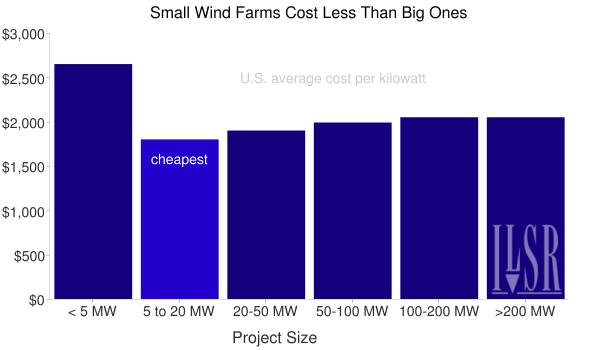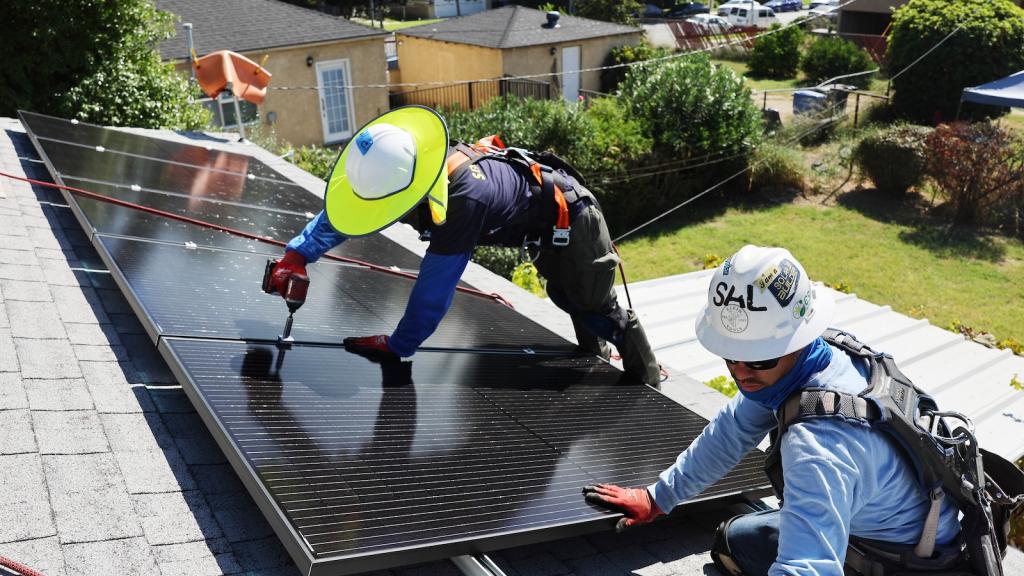This post originally appeared on Energy Self-Reliant States, a resource of the Institute for Local Self-Reliance’s New Rules Project.
It seems obvious: Every extra turbine in a wind farm comes at a lower incremental cost, making the biggest wind power projects the most cost effective.
If you bet $20 on that proposition, you just lost $20.
Instead, data from the U.S. Department of Energy’s 2009 Wind Technologies Market Report by Ryan Wiser and Mark Bolinger (a must-read) blows a hole in the conventional wisdom that bigger is better. The report shows that wind projects between five and 20 megawatts have the lowest installed cost per watt of any size wind project.
There are a few plausible explanations. For one, the economies of scale for ever-larger wind projects are limited. At some point, the marginal cost of an additional turbine is much like the previous one. The 500th wind turbine is likely the same price to install as the 499th.
Furthermore, there may be disproportionate costs for larger wind projects. For example, projects over 20 megawatts must by processed by the Federal Energy Regulatory Commission (FERC), a more onerous step than smaller projects being handled at the state level. Additionally, projects of inordinate size may require special financing that only a few large firms can handle, adding a price premium. Finally, large projects may only be possible with the addition of new transmission line capacity, both a costly and time-consuming process.
Whatever the reason, the conventional wisdom of “bigger is better” does not hold with wind power in the United States. And the cost advantage of modest-sized wind power projects may open up opportunities for local ownership, like the seven-turbine South Dakota Wind Partners project, with its 600 South Dakotan owners. The prospect isn’t just good for the cost of wind power, but for clean energy and the economy. Not only do locally owned projects like Wind Partners bring more public support for wind, they also garner significantly greater local economic benefits.
In wind power, the best policy is to “go local.”




